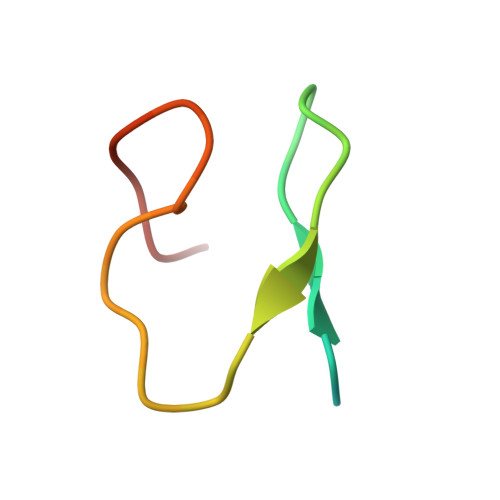K29-selective ubiquitin binding domain reveals structural basis of specificity and heterotypic nature of k29 polyubiquitin.
Kristariyanto, Y.A., Abdul Rehman, S.A., Campbell, D.G., Morrice, N.A., Johnson, C., Toth, R., Kulathu, Y.(2015) Mol Cell 58: 83-94
- PubMed: 25752573
- DOI: https://doi.org/10.1016/j.molcel.2015.01.041
- Primary Citation of Related Structures:
4S1Z, 4S22 - PubMed Abstract:
Polyubiquitin chains regulate diverse cellular processes through the ability of ubiquitin to form chains of eight different linkage types. Although detected in yeast and mammals, little is known about K29-linked polyubiquitin. Here we report the generation of K29 chains in vitro using a ubiquitin chain-editing complex consisting of the HECT E3 ligase UBE3C and the deubiquitinase vOTU. We determined the crystal structure of K29-linked diubiquitin, which adopts an extended conformation with the hydrophobic patches on both ubiquitin moieties exposed and available for binding. Indeed, the crystal structure of the NZF1 domain of TRABID in complex with K29 chains reveals a binding mode that involves the hydrophobic patch on only one of the ubiquitin moieties and exploits the flexibility of K29 chains to achieve linkage selective binding. Further, we establish methods to study K29-linked polyubiquitin and find that K29 linkages exist in cells within mixed or branched chains containing other linkages.
Organizational Affiliation:
MRC Protein Phosphorylation and Ubiquitylation Unit, College of Life Sciences, University of Dundee, Dow Street, Dundee DD1 5EH, UK.
















